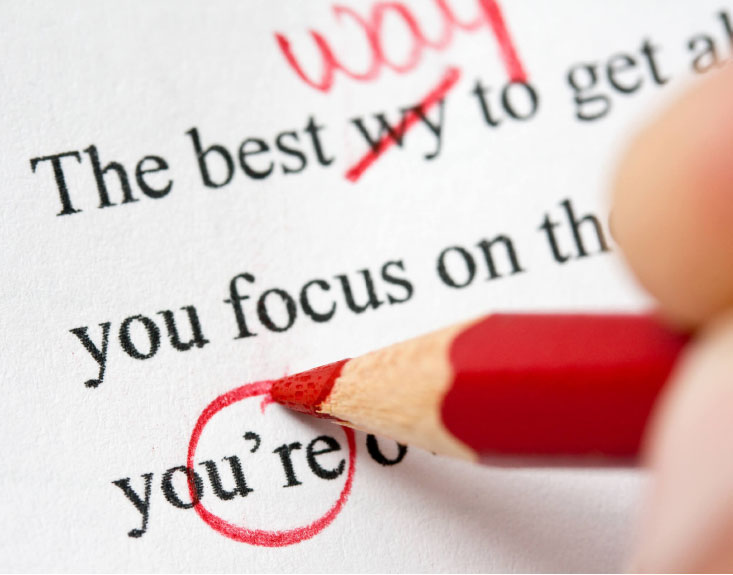Throughout their studies, students will make lots of mistakes. It is an important part of the learning process. If they are not making mistakes then they are not being given difficult enough topics and structures to work with. You have to choose material that is challenging but manageable for your class and correct mistakes in positive ways. Singling out students who make errors will make students feel self conscious and shy so some tact when correcting mistakes is important.
How to Proceed
Practice
When introducing new vocabulary, emphasize correct pronunciation and during the drilling exercises have students practice using choral repetition. This means students are not immediately singled out to pronounce new and unfamiliar words and they can become accustomed to the sound of the words together. The next step is generally to call on students or have students volunteer to pronounce words or phrases. It is an important step to check pronunciation on an individual basis; however it means that a student is being singled out to perform independently in front of the entire class. Correcting mistakes at this level is the most challenging but you can use the same process to correct errors in any situation.
Self- Correction
The best way to correct mistakes is to have students correct themselves. Ideally a student will realize a mistake has been made and fix it automatically but that is not always the case. If a student answers a question incorrectly you can gently prompt them to revisit their answer. One of the ways to do this is to repeat what the student said placing emphasis on the incorrect portion, for instance “I have play baseball.” and saying it in a questioning way. At this point the student has an opportunity to think about and revise his initial response. You may have your own method of prompting students with a facial expression or phrase which they associate with being incorrect but avoid saying words such as wrong, incorrect, or no in response to mistakes. They are negative and will have ill effects on your students’ confidence in the classroom.
Peer Correction
When a student is unable to self correct, peer correction might be appropriate. If a student raises his hand while you are waiting for a student to self correct, you may want to call on that student for the correct answer or, after waiting a short time for a student to self correct, you could ask the whole class the same question and encourage a choral response. Especially with challenging questions, this is a good method because then it is unknown who in the class has the right answer and who does not. Just repeat and emphasize the correct answer by writing it on the board and explaining why it is correct. This is a good method of correcting mistakes because it shifts focus away from the student that provided the original incorrect answer.
Providing the Answer: Last Resort
Sometimes individual students as well as entire classes have no idea what the answer to your question is. If providing hints and examples does not lead them to the correct answer, you will have to provide it. Generally this is a last resort and means that a lot of review activities may be in order but keeping a positive attitude and explaining the answer good-naturedly will do a lot to keep your students positive about learning English. Asking similar questions in a simpler form will build student confidence again so that the lesson can continue smoothly.
At every stage of an activity, praise should be given. If a student volunteers to answer a question, you can thank him immediately for volunteering which will boost his self confidence. At that point if the student provides an incorrect answer you can correct in an encouraging way by saying “Almost.” If the student gives the correct answer, be sure to say “Good job!” or “Excellent work!” As long as you are positive in your method of correcting errors, reassure your students that they are doing well, and do not get upset with them for making mistakes, they will continue to volunteer and try their best because making mistakes is OK. That is how learning should be. If students never take risks, they will not improve. •
